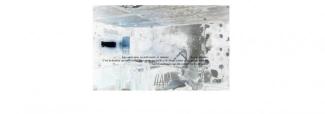Author's description:
"The interactive and multimedia work Stagno (Pond) is the result of a writing experience I have had with a friend. Just like my father, hers had died of a serious illness. For several weeks, we would meet and talk about our experience. Through short texts revolving around several themes, we would try to imagine each other’s experience. These texts have been published in the journal lieu-dit 19 and inspired a first animated, though not interactive, work on Mandelbrot’s website, which was since removed and destroyed by the authors. Some years after this experience in writing, I had the opportunity to take pictures in a burned-down house. On insurance grounds, the former inhabitants had had to leave all their belongings in the burned rooms. I decided to fill these rooms with the voice of my friend’s father who had died ten years before, as well as with his daughter’s voice and the healer’s. By interacting on manipulable elements, the reader moves from room to room in this soot-covered house; yet he/she never immerses him/herself in the scenery as would a video game avatar. The images clearly fulfil their role of photographs. Therefore, walking through this burned-down house does not amount to wandering in a 3D space, which every nook and cranny can be explored. The images are just reflections, vague memories, completely conditioned by the subjective eye of the photographer. They apply to a reality that changed a long time ago. The "voices" floating on these evanescent images are equally labile, i.e. constructed and deconstructed by fragile textual animations. Thus, the voice of the healer, the family’s last hope, asks the patient to "breathe," but instead of being animated via a systolic/diastolic movement, the text deconstructs itself and disappears in a last breath. The author's voice is sometimes superimposed on the animated text; in German, this voice tells her own experience of her father’s death, while never really tallying with the experience described by her friend in French. On the one hand, this work offers no way out, and the reader can wander endlessly to "meet" the voices; on the other hand, the location of the burned-down house does not really present itself to the reader, as is the case with the voices. Death, forgetfulness, the slow but sure decay of memories are both suggested on a "visual" level and denied by the circularity of the "wandering" experience. The digital work tries to preserve these memories, even if they are to fall inevitably into oblivion because of the instability of the device. The work invites the reader to become a party to this desperate attempt to prevent the stream of oblivion from leaking. Therefore, Stagno (Pond) is located on the border between the aesthetics of the ephemeral, in which the author accepts the slow decay of his/her work, and the aesthetics of re-enchantment, in which the author ascribes the digital device with a hope of survival, with a spectral characteristic linked to the materiality of the programmed matter and which remains despite the changes it undergoes on the electronic device."
Stagno is the translated version of the French original "Etang".
